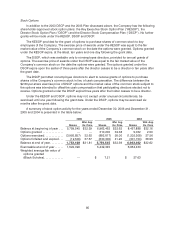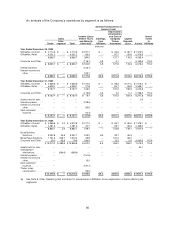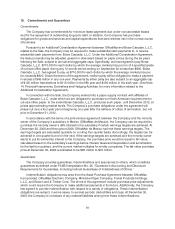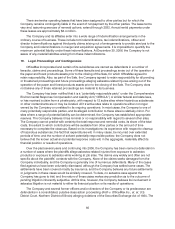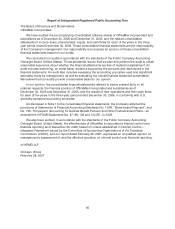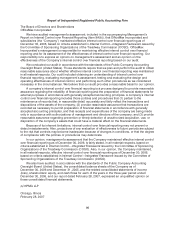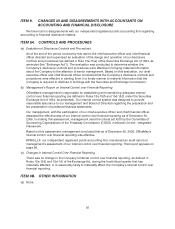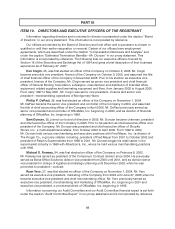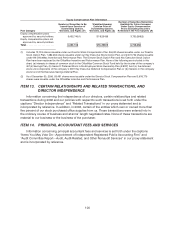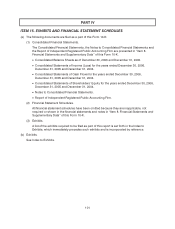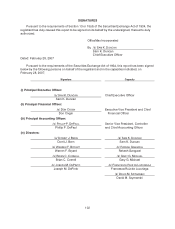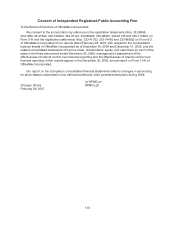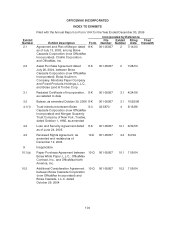OfficeMax 2006 Annual Report Download - page 99
Download and view the complete annual report
Please find page 99 of the 2006 OfficeMax annual report below. You can navigate through the pages in the report by either clicking on the pages listed below, or by using the keyword search tool below to find specific information within the annual report.95
Report of Independent Registered Public Accounting Firm
TheBoard ofDirectors and Shareholders
OfficeMax Incorporated:
We have audited the accompanying consolidated balance sheets of OfficeMax Incorporated and
subsidiaries as of December 30,2006 and December 31, 2005, and the related consolidated
statements of income (loss), shareholders’ equity, and cash flows for each of the years in the three-
year period ended December 30, 2006. These consolidated financial statements are the responsibility
of the Company’s management. Our responsibility is to express anopinion on these consolidated
financial statements based on our audits.
We conducted our audits in accordance with the standards ofthe Public Company Accounting
OversightBoard (United States). Those standards require that we plan and perform the auditto obtain
reasonable assurance about whether the financial statements are free of material misstatement. An
audit includes examining, on a test basis, evidence supporting the amounts and disclosuresin the
financial statements. An audit also includes assessing the accounting principles used and significant
estimates made by management, as well as evaluating theoverall financial statement presentation.
We believe that our auditsprovide a reasonable basis forour opinion.
In our opinion, the consolidated financial statements referred to above present fairly, in all
material respects, the financial position of OfficeMax Incorporatedand subsidiaries as of
December 30, 2006 and December 31,2005, andthe results of their operations and their cashflows
for each ofthe years in the three-year period ended December 30, 2006, in conformitywithU.S.
generally accepted accounting principles.
As discussed in Note 1 to the consolidated financial statements, the Company adopted the
provisions of Statements of Financial Accounting Standards No.123R, “Share-based Payment”, and
No. 158, “Employers’ Accounting for Defined Benefit Pension and Other Postretirement Plans—an
amendment of FASB Statements No. 87, 88, 106 and 132(R)”, in 2006.
We also have audited, inaccordance with the standards of the Public Company Accounting
OversightBoard (United States),the effectiveness of OfficeMax Incorporated’s internal control over
financial reporting as of December 30, 2006, based on criteria established in Internal Control—
Integrated Frameworkissued by the Committee of Sponsoring Organizations ofthe Treadway
Commission (COSO), andour report dated February 28, 2007, expressed an unqualified opinion on
management’s assessment of,and the effective operation of, internal control over financial reporting.
/s/ KPMG LLP
Chicago, Illinois
February 28, 2007


